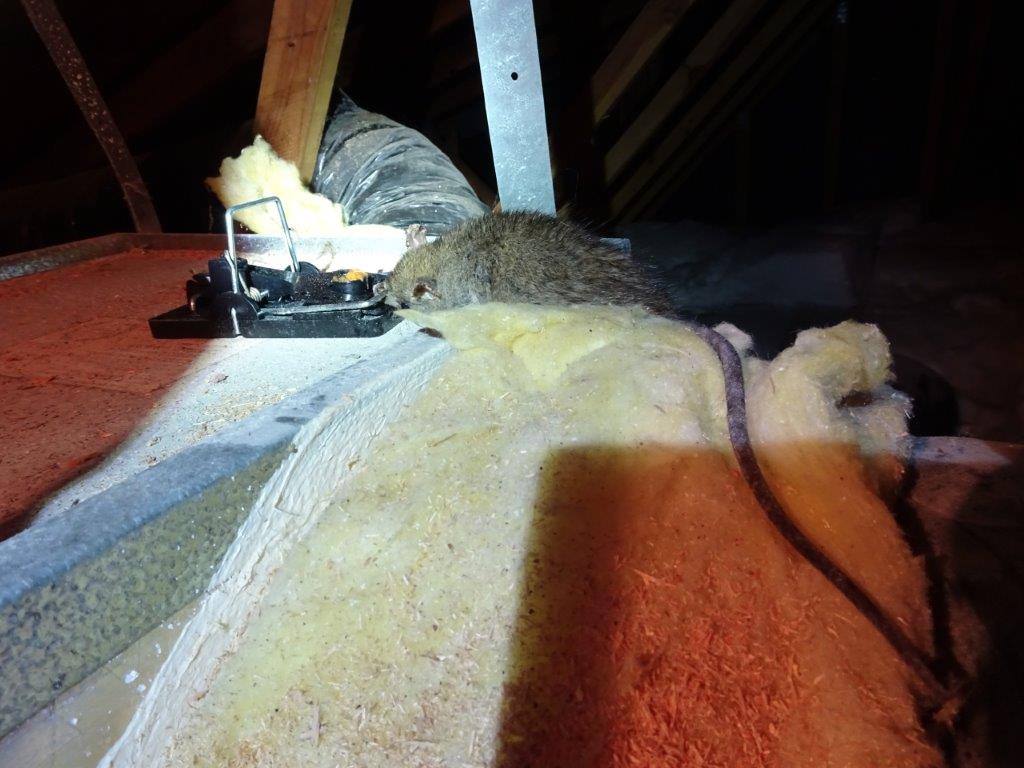Brown rats, the most common rats you'll come across, are generally found in more urban areas these days. We have cut down so much of their natural habitat, and we make so much mess, that they have been forced to move in with us, so to speak. In some cases, they have, quite literally, moved in with us – into our homes, usually in areas like the attic.

In your home, they are likely to be found in areas such as roof spaces, crawl spaces, and also attics. You may come across them in basements, attics, running across your kitchen floor, under your floorboards, in cavities deep in the walls, and much more. They only need a small hole, around the size of a quarter, in order to squeeze through. As you can imagine, that pretty much gives them the run of the roost.
They may live under sheds in your backyard, and they'll also love nesting in the grassy banks. Sewer systems are other common hiding spots, as are shipping ports, fish markets, and basically anywhere else that you'll find food. The smell of food is too enticing for these creatures to pass by.
The fact that rats surround us is our own fault, because we make food and shelter so accessible to them every day. If you protect your home, ensuring you inspect it and repair any damage, it will be wild-animal proof.
Go back to the Rats in the Attic home page.

People often ask why there are more rats in urban areas than in sparsely populated and rural areas. The answer is simple; there is more food for them and shelter in the urban areas than in rural areas and so they are naturally drawn to the cities and urban areas.
Although rats in the city have easy access to food and water, they still have a shorter lifespan when compared with wild rats because wild rats feed on natural food and fruits, which is healthier than what the city or urban rats get.
The Norway and roof rat species are the common rats found in the city and are also the most prominent rat species found in North America, Asia, South America, and Africa.
These rats can be terrestrial or arboreal in nature and when they proliferate in urban cities, they easily build their nests in the walls, attics, and clumps of vegetation in your yard and so both structures and areas around your home are unsafe and penetrated by these rats. Norway rats are also able to build their nests under sidewalks and patios.
Roof rats are arboreal and prefer to live on trees like Cypress and some elevated areas like roofs and attics. They are also very comfortable in eaves and attics where they depend on garbage and backyard waste for food.
Rats can feed on almost everything and their sharp teeth and claws help them to bite into anything they desire, making them really destructive especially if they live in your home. The rats that live in the wild live in tall grasses, shrubs, and honeysuckle.
The increased urbanization and development of areas that were previously forests and served as the home to these animals have reduced their natural food source and increased competition between animals and so rats leave the wild to come and co-habitat with humans.
The destructive nature of the feeding pattern of rats shows in the damage of wiring and plumbing systems, gnawed holes in walls, windows, and doors, and generally, their activities result in faulty home structures. Norway rat species also burrow through foundations that have grassy embankments and so they are more daring in damaging home structures than roof rats. They also spread diseases through their urine and feces and so they are health hazards and a threat to public health.
Another reason why you find more rats in urban areas than rural areas is that rats do not have adequate protection against predators in the wild. Rats are low on the food chain and have a lot of predators from larger rodents, to reptiles like snakes and birds, and so they are safer in urban areas because these predators are not as prominent.
Rats are found in both rural and urban areas but are more prominent in urban areas because the cities are more favorable to them. The city supports life and reproduction without predation and so rats love city life.








